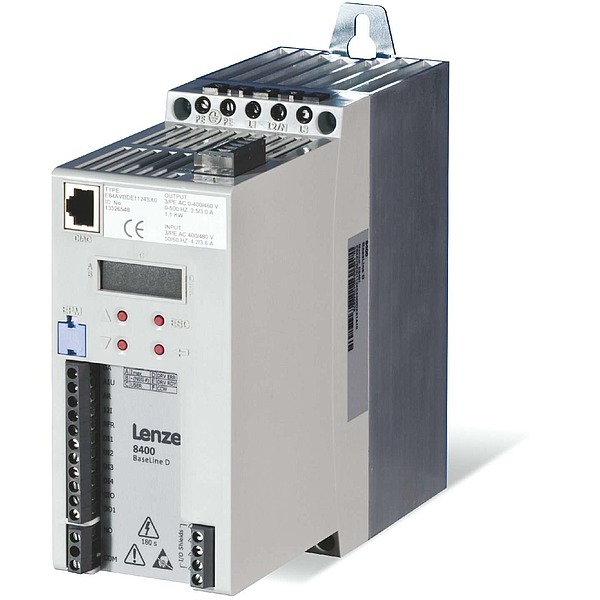Posted on 7th Mar 2024

In today's industrial landscape, maximizing efficiency and control is paramount for businesses striving to remain competitive. Two key components that play a crucial role in achieving these goals are sensors and Variable Frequency Drives (VFDs). While sensors gather valuable data about various parameters in industrial processes, VFDs such as Lenze Drive, Keb Drive, offer precise control over motor speed and energy consumption. When integrated effectively, sensors and VFDs create a powerful synergy that enhances productivity, reduces energy costs, and improves overall operational performance. In this article by CM Industry Supply Automation, you will explore the symbiotic relationship between sensors and VFDs, highlighting the benefits of their integration and real-world applications.
Sensors serve as the eyes and ears of industrial systems, capturing data on parameters such as temperature, pressure, flow rate, vibration, and more. This data provides valuable insights into the health and performance of equipment, enabling predictive maintenance, process optimization, and quality control. With advancements in sensor technology, industries have access to an array of sensors capable of measuring various parameters with high precision and reliability.
Variable Frequency Drives (VFDs): Precision Control and Energy Efficiency
Variable Frequency Drives (VFDs) are electronic devices that control the speed of electric motors by varying the frequency and voltage of the power supplied to them. By adjusting the motor speed to match the requirements of the load, VFDs offer precise control, reduced energy consumption, and extended equipment lifespan. Industries across sectors such as manufacturing, HVAC, water treatment, and agriculture rely on VFDs to optimize processes, minimize downtime, and lower operational costs.
Enhanced Process Control: By combining sensor data with VFDs, industries can achieve finer control over critical parameters in their processes. For example, sensors monitoring temperature and pressure can provide real-time feedback to VFDs, enabling them to adjust motor speed accordingly to maintain optimal conditions.
Energy Savings: VFDs are renowned for their energy-saving capabilities by matching motor speed to load demand. When integrated with sensors, VFDs can respond dynamically to changes in operating conditions, further optimizing energy consumption. For instance, sensors detecting low occupancy levels in a building can signal VFDs controlling HVAC systems to adjust fan speeds, reducing energy usage during off-peak hours.
Predictive Maintenance: Sensors play a crucial role in predictive maintenance by continuously monitoring equipment health and detecting anomalies early. When integrated with VFDs, sensor data can trigger alerts or automatically adjust motor speed to prevent equipment damage or failures. For instance, vibration sensors detecting excessive machine vibration can signal VFDs to reduce motor speed, mitigating potential damage and downtime.
Improved Safety: Sensors and VFDs work in tandem to enhance safety in industrial environments. For example, proximity sensors can detect the presence of personnel or obstacles near machinery and communicate with VFDs to halt or reduce motor speed, preventing accidents and injuries.
Pump Systems: Integration of flow sensors with VFDs in pump systems enables precise control of flow rates based on demand, resulting in energy savings and extended equipment life.
HVAC Systems: Temperature and occupancy sensors integrated with VFDs in HVAC systems enable adaptive control of fan speeds, optimizing comfort levels and reducing energy consumption.
Conveyor Systems: Load sensors combined with VFDs in conveyor systems allow for dynamic speed adjustment based on material weight, improving efficiency and reducing wear and tear.
According to CM Industry Supply Automation Lenze Drive & Keb Drive supplier. The integration of sensors and Variable Frequency Drives (VFDs) represents a powerful synergy that enhances efficiency, control, and safety in industrial applications. By leveraging sensor data to inform VFD operation, industries can achieve precision control, optimize energy usage, and implement proactive maintenance strategies. As sensor technology continues to advance and VFDs become more sophisticated, the potential for synergy between these two components will only grow, offering new opportunities for improved performance and sustainability across diverse industries.